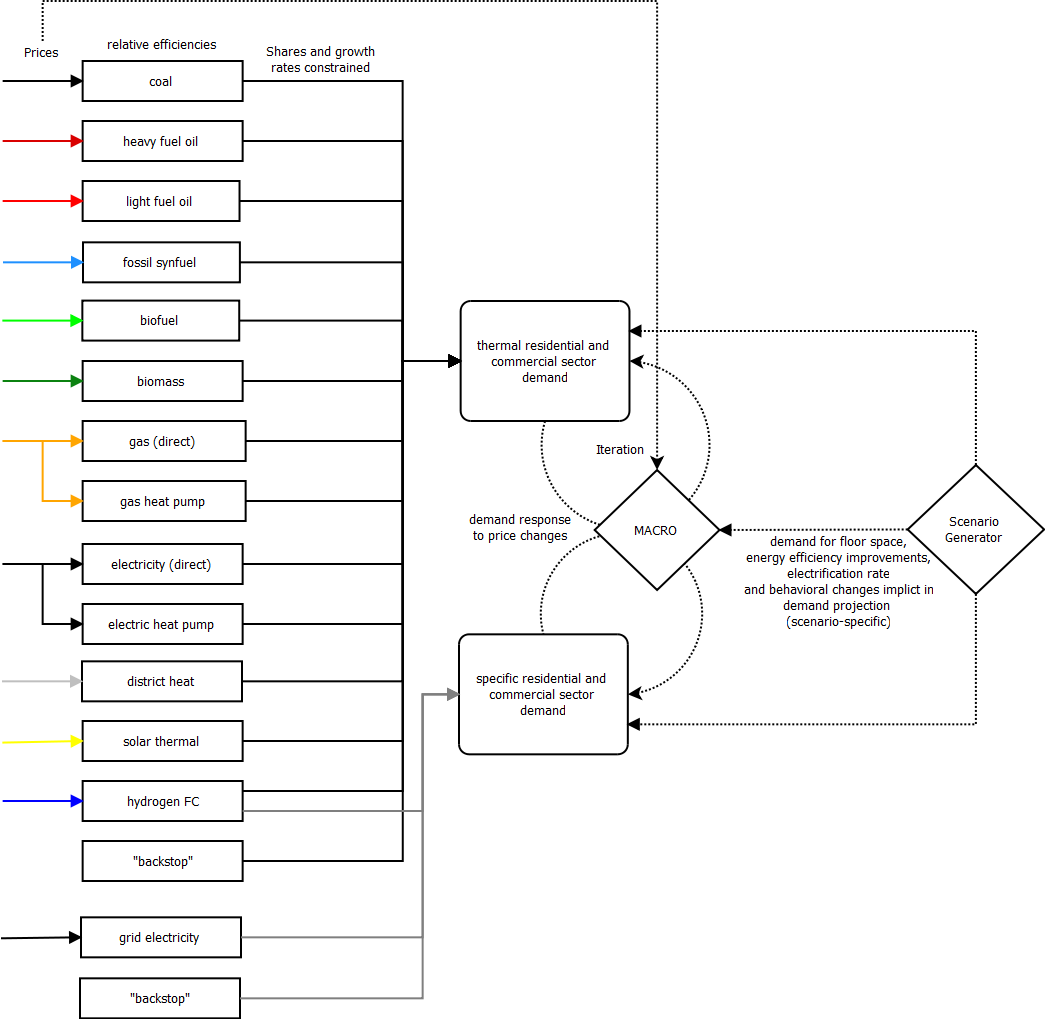Residential and commercial sectors
The residential and commercial sector in MESSAGEix distinguishes two demand categories, thermal and specific. Thermal demand, i.e., low temperature heat, can be supplied by a variety of different energy carriers while specific demand requires electricity (or a decentralized technology to convert other energy carriers to electricity).
The residential and commercial thermal energy demand includes fuel switching as the main option, i.e., different choices about final energy forms to provide thermal energy. In addition to the alternative energy carriers that serve as input to these thermal energy supply options, their relative efficiencies also vary. For example, solid fuels such as coal have lower conversion efficiencies than natural gas, direct electric heating or electric heat pumps. Additional demand reduction in response to price increases in policy scenarios is included via the fuel switching option (due to the fuel-specific relative efficiencies) as well as via the linkage with the macro-economic model MACRO (see Fig. 14 below). The specific residential and commercial demand can be satisfied either by electricity from the grid or with decentralized electricity generation options such as fuel cells and on-site CHP.

Fig. 14 Schematic diagram of the residential and commercial sector representation in MESSAGEix.
To reflect limitations of switching to alternative fuels, for example as a result of limited infrastructure availability (e.g., district heating network) or some energy carriers being unsuitable for certain applications, share constraints of energy carriers (e.g., electricity) and energy carrier groups (e.g., liquid fuels) are used in the residential and commercial sector. In addition, as in the transport sector, the diffusion speed of alternative fuels is limited to mimic bottlenecks in the supply chains, not explicitly represented in MESSAGEix (e.g., non-energy related infrastructure).
Table 19 presents the quantitative translation of the the storyline elements of SSP1, SSP2 and SSP3 in terms of electrification rate for the residential and commercial sectors. These indicators apply to 2010-2100; Intensity improvements are in FE/GDP annually (Fricko et al., 2017 [17]).
SSP1 |
SSP2 |
SSP3 |
|
Residential & Commercial |
High electrification rate:1.44% (Regional range from 0.35% to 4%) |
Medium electrification rate: 1.07% (Regional range from 0.23% to 3%) |
Low electrification rate: 0.87% (Regional range from 0.37% to 2%) |